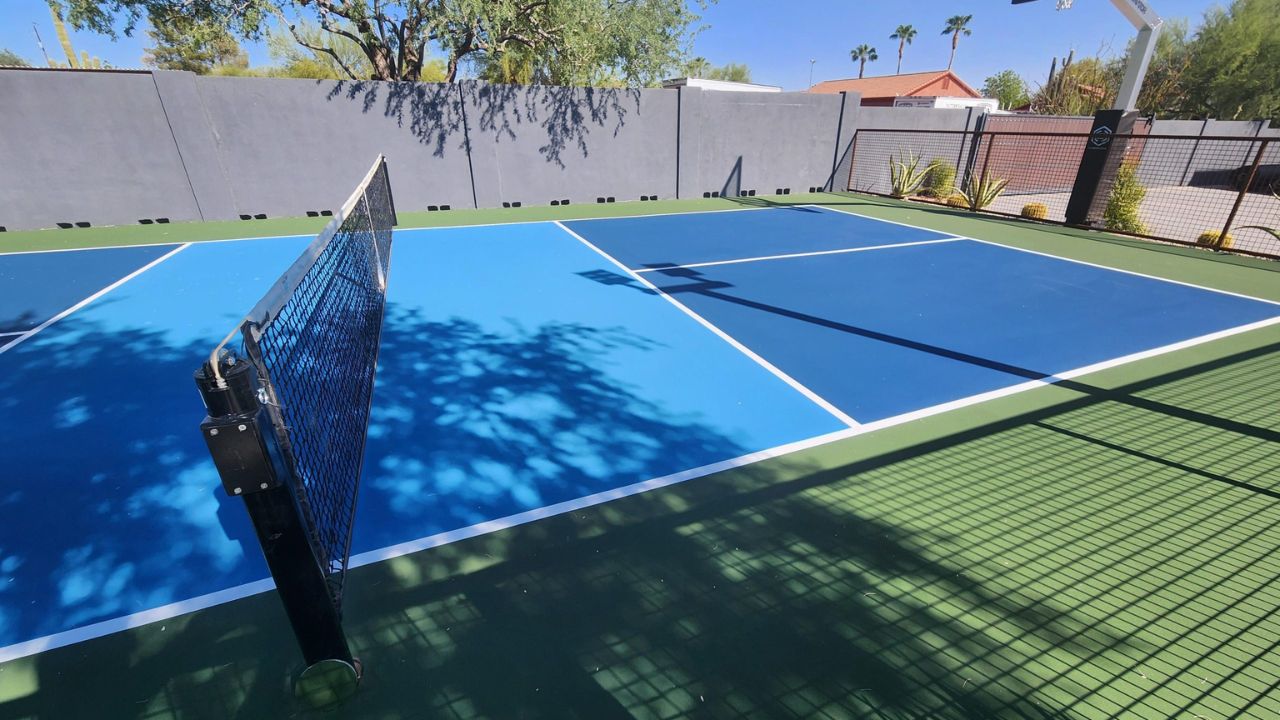The sport of pickleball is experiencing rapid popularity because it provides exciting play opportunities for people of any age. Homeowners who want the advantage of private courts and flexibility should consider building their portable courts. The homemade portable pickleball court enables enthusiasts to play the game without requiring permanent installation. The proper materials, combined with strategic planning, enable users to build and disassemble a portable court system for their homes. Those seeking a high-quality portable pickleball court can explore the options available at https://zsfloortech.com/sport-court/portable-pickleball-court/.
Choosing the Right Location
The selection of an ideal location stands as the most essential factor for building an effective DIY pickleball court. A flat and level surface is a fundamental requirement to achieve safe and fair gameplay. Driveways, together with patios and vacant yards, make excellent choices for location. The standard pickleball court dimensions amount to 20 feet by 44 feet, but players can adapt the court size when space becomes an issue. The court area requires enough open space for both safety purposes and player movement. The installation process requires the evaluation of possible obstacles, including trees and fences, as well as overhanging structures.
Preparing the Playing Surface
The selection of a location leads to surface preparation as the following step. The optimal playing surface consists of concrete asphalt or a smooth wooden deck. Before installing portable surfaces such as interlocking sport tiles or roll-out court mats on grass or dirt areas it is essential to level and compact the ground surface. The short-term surfaces deliver reliable performance by replicating professional court standards and can be easily taken away when the space is not being used.
Marking the Court Lines
The playing area requires precise court markings that need to be placed accurately. A standard court setup divides into right and left service courts with a non-volley zone (also known as the kitchen) and baselines. Three types of markers, including temporary chalk, removable tape, and vinyl court markers, enable safe line marking without surface damage. Painters' tape functions as an alternative solution for driveways and patios because it stays in place during gameplay without causing any residue.
Setting Up a Portable Net System
A pickleball court needs its net as its essential feature. The official height of a regulation net extends to 36 inches by the sidelines while reaching 34 inches in its central section. Portable pickleball net systems exist in the market and feature features that make setup and breakdown operations easy. A badminton or tennis net adjusted to the right height serves as a cost-effective solution. Stability throughout gameplay depends on it, so weighted bases or anchor straps help prevent the net from moving or sagging.
Ensuring Proper Court Dimensions
Accurate measurements ensure fair gameplay. The court dimensions must be measured using tape to follow pickleball regulation standards. The kitchen area stretches seven feet beyond the net on both sides, and the service courts must be divided equally. The dimensions of the court need to match exact specifications to deliver authentic play quality, which benefits players who want to practice competitive skills.
Creating a Portable Court Storage System
The main benefit of a DIY portable court lies in its storage capability during inactive periods. A storage container designed for nets, boundary markers, and surface tiles enables the proper organization and protection of components. The setup process becomes easier because foldable nets and lightweight court markers both minimize storage size. The lifespan of equipment extends while game access remains quick because storage areas include garages and sheds.
Enhancing the Playing Experience
The enjoyment of a home-based pickleball court becomes better with additional features incorporated into the setup. The combination of proper illumination and protective windbreaks consisting of temporary fences or netting enables players to engage in nighttime matches. The court becomes more usable through the implementation of a specific seating space for both spectators and resting players. A ball holder or storage rack becomes essential for regular players because it provides both convenience and organization benefits.
Maintaining the Court for Longevity
Regular maintenance practices help maintain the quality standards of a homemade pickleball court. The playing surface needs regular cleaning to remove debris which helps prevent dangerous trip areas. The court lines require occasional restaining to stay visible. Outdoor storage of nets requires proper methods to protect them from damage. The safety of continued play depends on checking for uneven surfaces and making necessary adjustments.
Conclusion
A home-built portable pickleball court serves as a worthwhile project that provides endless recreation and exercise opportunities. A functional playing space emerges when players select their location carefully, prepare the surface, set boundaries, and install a portable net. Regular maintenance and proper storage methods enable the court to preserve its excellent condition throughout multiple years. Building a home pickleball setup creates a space for family bonding, skill improvement, and friendly matches without requiring a permanent installation.


